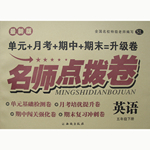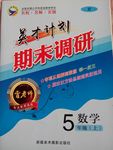1.How to Prevent from Altitude Sickness
Being a paradise to many tourists,Tibet has been the dreaming wonderland and attracted tourists all over the world.And now as tourism in Tibet enters the peak season,more and more visitors are longing to travel to the mysterious highland.Meanwhile,they are worried about the altitude sickness (高原反应) which is most likely to experience in Tibet.Experts advised that tourists to Tibet should have a scientific and better understanding of the disease.
Altitude sickness,also known as acute high altitude disease (AHAD),is a common physiological reaction caused by acute exposure to low oxygen content and air pressure and dry weather when people getting up to a place with a certain altitude.
Acute altitude reaction usually occurs within hours or days after a person goes up to a highland above 2,700meters above sea level from a region with a lower altitude.It is believed that most visitors to Tibet will be certain to suffer from at least some symptoms which will generally disappear through acclimatization in several hours to several days.It presents as a collection of nonspecific symptoms including headache,shortness of breath,oppressed feeling in the chest,lack of appetite,fever,dizziness,fatigue or weakness,etc.Some will even take the chance to come down with drowsiness,insomnia,adrenaline surge,nosebleed and so on.
However,experts point out that human bodies can adapt to the surroundings (适应环境) in a gradual way.Therefore,altitude sickness is not that scary.
To prevent the occurrence of altitude sickness,visitors should have a proper preparation in advance and avoid heavy physical activities before they go to Tibet.After getting off the plane,they should try not to carry heavy things,run or avoid outdoor activities as much as possible.
Nifedipinum,Nuodikang Capsule and Suoluomabao Capsule (胶囊),which is also known as Hongjingtian Capsule,may help some people prevent the occurrence of altitude sickness when they are taken three days before people arrive in a highland.
Visitors with a severe cold,a high fever,acute or chronic pulmonary diseases,severe cardiovascular diseases,women in late pregnant and kids under three years old should avoid traveling to regions with a high altitude.
Proper rest,considerate preparation,and enough oxygen uptake can all help to relieve altitude sickness.If a patient does not show any sign of improvements after three to four hours,he/she should go to a hospital for medical treatment.
Title:How to Prevent from Altitude Sickness
| Tibet is an (66)attractive/ideal site for tourists,but altitude sickness will be probably along with tourists. |
| Causes | Altitude sickness (67)results/arises from low oxygen content and air pressure and dry weather. |
| (68)Symptoms | ◇Headache,shortness of breath,oppressed feeling in the chest,lack of appetite,fever,dizziness,fatigue or weakness,etc. |
| Prevention | ◇Human bodies can adapt to the surroundings (69)gradually.
◇Visitors can take some useful (70)medicines in advance so as to avoid altitude sickness.
◇Visitors can take some (71)measures to help prevent the occurrence of altitude sickness.
◇The people with (72)special symptoms should avoid traveling to Tibet. |
| (73)Treatments | ◇Proper rest,considerate preparation,and enough oxygen uptake can help to (74)relieve altitude sickness.
◇A patient who does not (75)improve after three to four hours should go to a hospital for treatment. |

 名师点拨卷系列答案
名师点拨卷系列答案 英才计划期末调研系列答案
英才计划期末调研系列答案